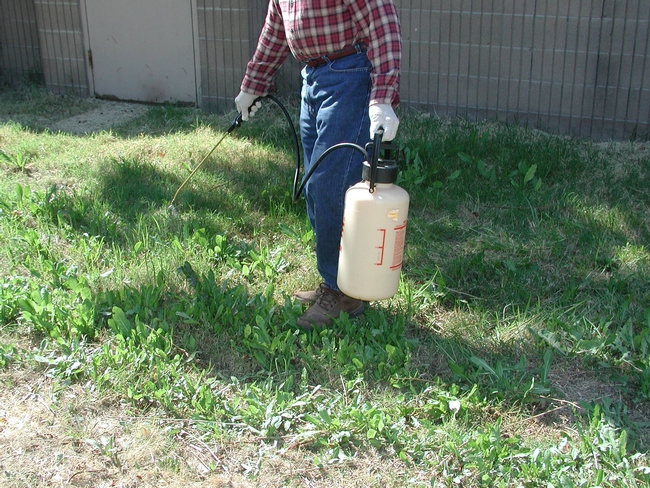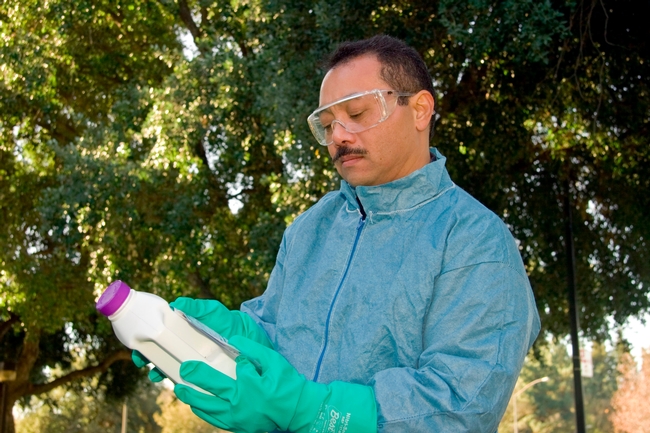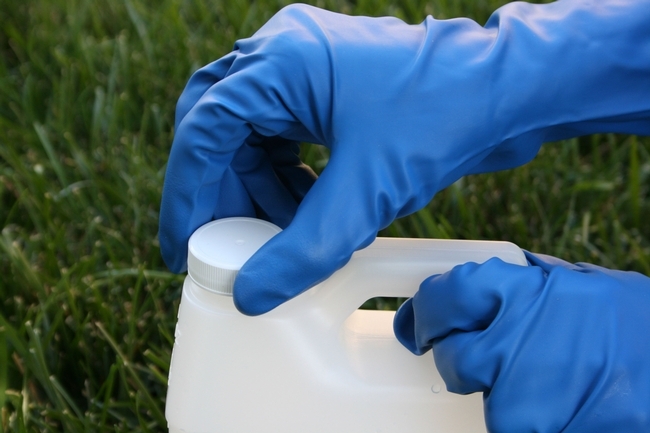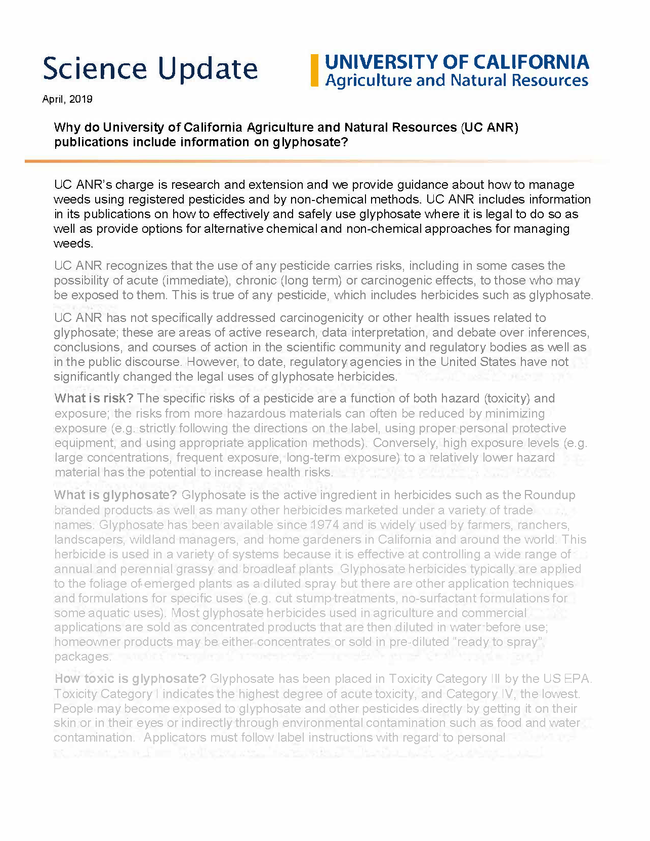From the Pests in the Urban Landscape blog :: Sept. 23, 2019
ANR: Agricultural and Natural Resources
UC ANR's charge is research and extension and we provide guidance about how to manage weeds using registered pesticides and by non-chemical methods. UC ANR includes information in its publications on how to effectively and safely use glyphosate where it is legal to do so as well as provide options for alternative chemical and non-chemical approaches for managing weeds.
UC ANR recognizes that the use of any pesticide carries risks, including in some cases the possibility of acute (immediate), chronic (long term) or carcinogenic effects, to those who may be exposed to them. This is true of any pesticide, which includes herbicides such as glyphosate.
UC ANR has not specifically addressed carcinogenicity or other health issues related to glyphosate; these are areas of active research, data interpretation, and debate over inferences, conclusions, and courses of action in the scientific community and regulatory bodies as well as in the public discourse. However, to date, regulatory agencies in the United States have not significantly changed the legal uses of glyphosate herbicides.
What is risk? The specific risk of a pesticide are a function of both hazard (toxicity) and exposure; the risks from more hazardous materials can often be reduced by minimizing exposure (e.g. strictly following the directions on the label, using proper personal protective equipment, and using appropriate application methods). Conversely, high exposure levels (e.g. large concentrations, frequent exposure, long-term exposure) to a relatively lower hazard material has the potential to increase health risks.

How toxic is glyphosate? Glyphosate has been placed in Toxicity Category III by the US EPA. Toxicity Category I indicates the highest degree of acute toxicity, and Category IV, the lowest. People may become exposed to glyphosate and other pesticides directly by getting it on their skin or in their eyes or indirectly through environmental contamination such as food and water contamination. Applicators must follow label instructions with regard to personal protective equipment (PPE). Whether or not specifically required by the product label, wearing long pants, closed toed shoes, chemical resistant gloves, and protective eye wear will reduce the risk of glyphosate exposure. Even if chemical-resistant gloves are worn, people should always wash their hands after applying pesticides, and before activities such as eating, smoking, or using the restroom. Most glyphosate products available for the homeowner indicate on the label that people and pets may enter the treated area after the spray has dried.

Other groups such as the World Health Organization (WHO) and United Nations Food and Agriculture Organization (FAO) also examined the scientific literature on glyphosate. The joint FAO/WHO report concluded that glyphosate alone or in a formulation is unlikely to cause a carcinogenic risk to humans from exposure in the diet. The U.S. Environmental Protection Agency (US EPA), the regulatory agency that determines how pesticides may be used legally in the U.S. also concluded that it is not likely a cancer risk.

Weeds can have negative impacts on agriculture, public health, natural resources, and our economy. Likewise, pest control practices also have a range of potential impacts and outcomes. UC ANR promotes the use of Integrated Pest Management (IPM) strategies, including cultural and mechanical practices, and herbicides when needed. If glyphosate or any other herbicide is used to manage weeds, the pesticide label must be followed to ensure these products are used safely and legally for minimal exposure to applicators, non-target organisms, and our environment. For more information about weed management practices and the safe and effective use of pesticides, visit the UC IPM website.
For detailed information about glyphosate or any other pesticide, visit the National Pesticide Information Center website at or call 1-800-858-7378 Monday–Friday, between 8:00 a.m.–12:00 p.m. Pacific Time. The National Pesticide Information Center provides objective, science-based answers to questions about pesticides.
--Developed by a team of UC ANR Advisors and Specialists with expertise in weed science. For more information: Please contact UC ANR Strategic Communications at http://anrcs.ucanr.edu/Strategic_Communications/
[Article originally published as "Addressing the Science Surrounding Glyphosate" in the Summer 2019 issue of the Retail Nursery and Garden Center IPM Newsletter.]
